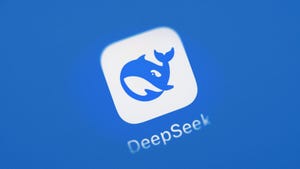Cisco Unveils New AI Data Center Solution with NvidiaCisco Unveils New AI Data Center Solution with Nvidia
Cisco Nexus HyperFabric AI clusters simplify the deployment of generative AI workloads, execs claim. What do industry analysts say?

Cisco has launched an all-in-one AI data center solution co-developed by Nvidia that provides enterprises the server, storage, networking equipment, and AI software they need to deploy generative AI and other AI applications on-premises, the company announced today (June 4).
At its Cisco Live conference in Las Vegas, Cisco executives said the new product, called ‘Cisco Nexus HyperFabric AI clusters’, will feature Cisco networking gear, Cisco compute solutions running on Nvidia GPUs and DPUs, Nvidia AI Enterprise software, and VAST data storage.
The goal is to make it easy for enterprises to implement and manage new AI data center infrastructure in on-premises data centers, colocation facilities, and edge locations. To that end, enterprises can centrally manage and monitor the entire solution with Cisco’s cloud-based management software.
Cisco executives claim that Cisco Nexus HyperFabric AI clusters will be the first data center product line that can be cloud-managed. The company said select customers will have early trial access during the 2024 fourth quarter with general availability expected shortly after.
In an interview with Data Center Knowledge this week, Murali Gandluru, Cisco’s vice president of product management for data center networking, said the jointly developed solution with Nvidia will allow enterprises to “partake in the AI evolution” and to “easily design, deploy, operate, and manage full-stack AI infrastructure in a plug-and-play model.”
Analysts’ Takes: Cisco vs. the Competition
With today’s announcement, Cisco hopes to capture a share of the hot market for AI data center infrastructure. Industry analysts say Cisco has the potential to succeed.
It helps that the company has partnered with Nvidia, whose GPUs dominate the AI market. But the company’s networking expertise is also a plus, said Zeus Kerravala, principal analyst of ZK Research.
“When it comes to AI infrastructure, Cisco is somewhat of an underrated company,” Kerravala told Data Center Knowledge. “One thing that’s not well understood in the industry is that the network plays an important role in how AI performs.
He added: “You can have all the computer clusters you want, but if you can’t transfer the data across them in a timely manner, then all the money you spend on GPUs and AI servers goes to waste. Your networking needs to be in lockstep. Cisco is still the world’s largest networking vendor, and they’ve got systems of all sizes.”
Cisco’s competition in this space includes server and networking vendors, Kerravala said. Arista Networks last week announced it is collaborating with Nvidia to develop a software agent to better manage networks and servers in AI clusters.
Dell Technologies, Hewlett Packard Enterprise, and Lenovo also have partnerships with Nvidia to develop generative AI hardware solutions. Cisco partnered with Nvidia in February, and Cisco HyperFabric is the first product stemming from the relationship, explained Kevin Wollenweber, senior vice president and general manager of Cisco’s networking, data center, and provider connectivity division.
Vijay Bhagavath, IDC’s research vice president of cloud and data center networks, said Cisco is well positioned in the market and has the right ingredients to succeed. Cisco has a huge base of enterprise customers, including Fortune 500 companies, that it can sell to, he said.
“Cisco has a real footprint that they can go to. They can tell their current customers, ‘If you’re interested in running LLMs in your data centers, you can leverage our HyperFabric,’” Bhagavath said. “It has all the right piece parts: leaf-and-spine switches that can do 400 to 800G, the compute running on Nvidia GPUs, the cloud automation management model, and they have all the Nvidia features they can leverage – DPUs, NICs, and NIMs microservices.”
Use cases for Cisco’s solution include enterprises that want to implement AI applications internally because they have a lot of data that is private and confidential that they don’t want to expose to the cloud, Bhagavath said.
For example, some companies may have specialized use cases, such as drug discovery or car design, where they have specialized applications and massive amounts of data that they want to keep in-house. Other enterprises may need to run an open-source large language model internally for regulatory compliance reasons, he said.
More Details on Nexus HyperFabric
Nexus HyperFabric AI clusters have been developed for enterprises that are seeking to adopt AI infrastructure for generative AI and AI inferencing workloads but want to deploy it in a much simpler way, Cisco’s Wollenweber told DCK.
A key factor that enables simplicity is cloud management capabilities that are similar to how Cisco Meraki has enabled enterprises to configure, manage, monitor, and troubleshoot their wifi and local area networks through a single dashboard, Gandluru said.
For example, Cisco HyperFabric, the company’s cloud-based management software, automates some tasks – such as network underlay configurations – and allows enterprises to centrally monitor the performance of workloads, Wollenweber said.
Cisco HyperFabric will include Cisco compute solutions that are based on Nvidia’s MGX server specification, which is a modular and flexible server architecture that supports different form factors and Nvidia hardware, a Cisco spokesman confirmed.
The solution will run on Nvidia Tensor Core GPUs, starting with the Nvidia H200 NVL GPU. It will also support the Nvidia BlueField-3 DPU (data processing unit) processor, which offloads processing tasks like network, security, and storage management to lighten the load on CPUs, and BlueField-3 SuperNIC network accelerators, the company said.
Other components of Cisco HyperFabric include:
Cisco 6000 series switches delivering 400G to 800G (gigabit ethernet) performance, and Cisco Optics family of QSFP-DD modules.
Nvidia AI Enterprise, a software suite of AI tools, frameworks and pretrained models designed to make it easier for enterprises to develop and deploy AI workloads. It includes Nvidia NIM microservices.
VAST Data Platform, which offers unified storage, database and a data-driven function engine for AI.
“We’re not just taking Nvidia’s products, putting them into servers and building a fabric, and then slapping them together. It’s a fully converged solution,” Wollenweber said.
Cisco Nexus Dashboard Improvements
Not every enterprise wants to use cloud-based management tools, however. For those organizations, Cisco said it has improved the Nexus Dashboard, a software tool for managing data center networks on-premises.
New improvements include centralizing the management of Nexus NX-OS and ACI fabric controllers into one user experience, Gandluru said.
About the Author
You May Also Like









